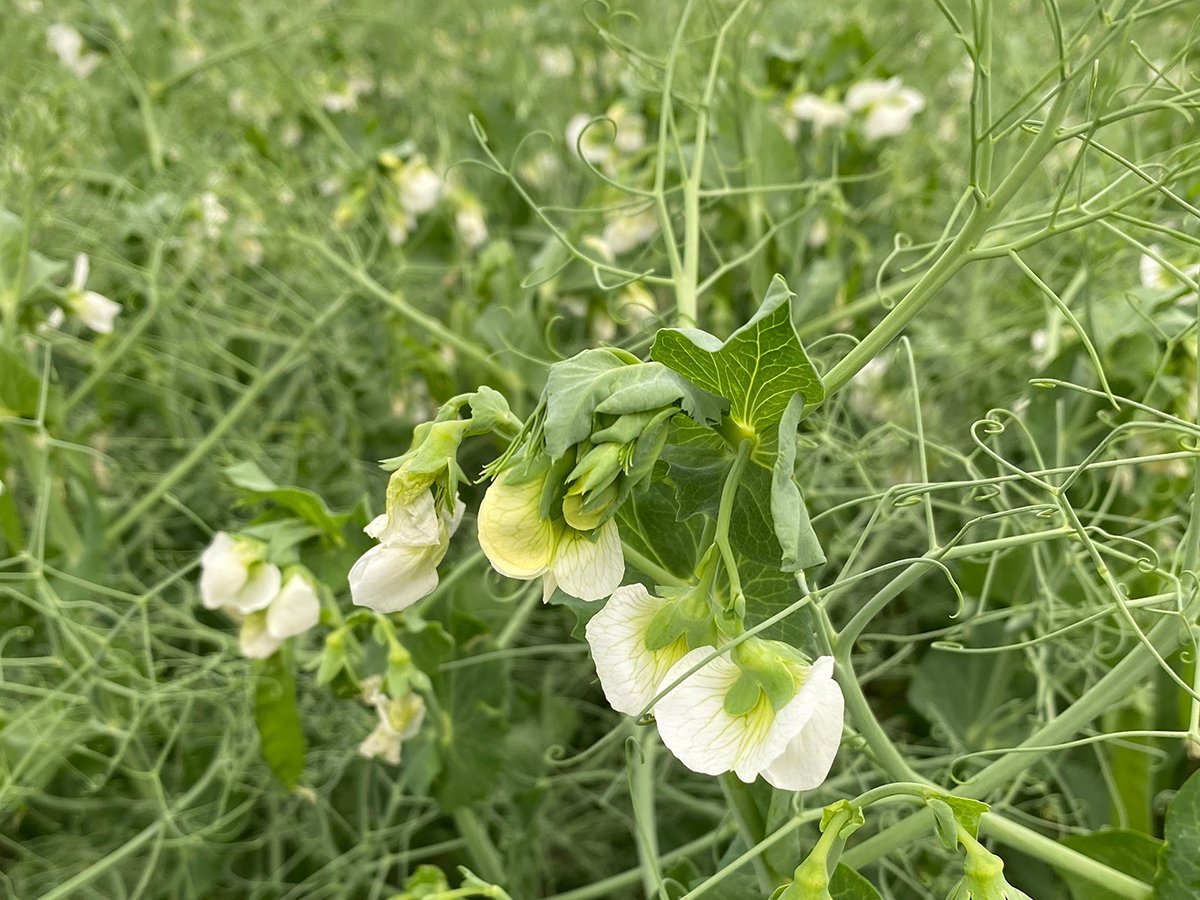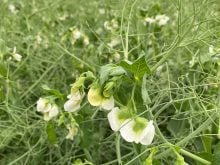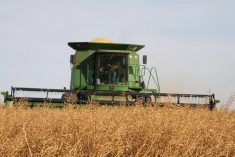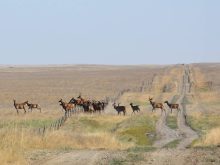When calibrating an air seeder for field peas, producers should aim for a target stand of seven to eight established pea plants per sq. foot.
According to farmers and agronomists in Alberta, the highest yielding pea crops in that province have had at least seven plants per sq. foot, although many have had eight plants or more per sq. foot.
“Field pea does not have a high degree of plasticity,” said Mark Olson, a provincial pulse extension specialist with Alberta Agriculture.
“This means that the field pea plant will not branch or tiller enough to compensate for fewer plants like canola or cereals will. Farmers attempting to save costs by lowering seeding rates will have fields with low plant stands and lower yield.”
Read Also

Crop quality looks good this year across Prairies
Crop quality looks real good this year, with the exception of durum.
Seeding rate research in Saskatchewan indicated that field pea densities of fewer than five plants per sq. foot did not increase yield.
This work was conducted with seed that displayed high germination rates, good vigour and low disease levels. The seed was planted in weed-free conditions and with lower rainfall.
Olson said little research has been done in Western Canada on higher-than-suggested target plant populations.
“Higher seeding rates may increase the competitiveness of the field pea crop with weeds, but this may be offset with a higher number of plants competing for water, nutrients and sunlight,” he said.
“This research work needs to be revisited with current varieties of field pea.”
Ken Lopetinsky, a pulse research agronomist with Alberta Agriculture, said producers must pay attention to the size of their seed when calculating seeding rates.
“Seed size, sometimes referred to as 1,000 kwt, or the weight in grams of 1,000 seeds, varies not only between varieties but within the same variety by as much as 25 percent,” he said.
“In other words, your plant population may be lower or higher by as much as 25 percent with the same variety.”
A quick way to obtain a 1,000 kwt of a seed lot is to count out 100 seeds, take the weight in grams and multiply by 10. Repeat this three times and take the average of your three counts.
Seed quality is another important factor, especially when dealing with peas and other pulse crops. Delayed harvest, sprouting, frost, excessive handling, temperature during handling, and seed moisture content all affect seed quality.
“The lower the seed moisture content, the greater the probability of damage to the seed at planting regardless of the pulse species,” Olson said.
“And, the larger the seed, combined with low seed moisture content, the greater the chance of seed damage during handling.”
Research on pulse seed damage has shown that belt conveyors are better than augers, which have been shown to reduce germination by three to 12 percent, although producers have seen damage exceeding 20 percent in seeds with lower moisture content.
“Although augers can be modified with bristle flighting and can run at a medium to slow speed and fairly full, augers will still cause more damage than belt conveyors,” Olson said.
“Belts are a ‘must have’ for kabuli chickpea, all dry beans and low moisture pea seed. Low moisture pea seed is seed less than 12 percent moisture content.”
The Prairie Agricultural Machinery Institute has tested moisturizing pulse seed to reduce damage during handling. Its results suggest that applying water to the pulse seed will strengthen its coating and reduce damage, Lopetinsky said.
“Use of liquid and peat based inoculants applied with a sticker can also cushion the seed by adding a coating around the seed. However, care must be taken to ensure that the inoculation process does not increase seed damage due to high auger speeds, less than a full auger and high auger angle.”
PAMI has also conducted tests to determine the extent of pulse damage that occurs in the air seeder.
With a well-maintained air seeder operated at correct air speeds, the amount of damage can be as low as three percent. Producers should compensate for this damage when calculating seeding rates.
High air flow, missing rubber parts in the manifolds and sharp corners in the delivery system can increase seed damage to more than 20 percent.
Lopetinsky said producers should handle pulse seed as gently as possible and reduce the number of handlings if possible.
Details on pulse wetting procedures can be obtained from the PAMI website at www.pami.ca/index_of_downloadable_reports.htm.














